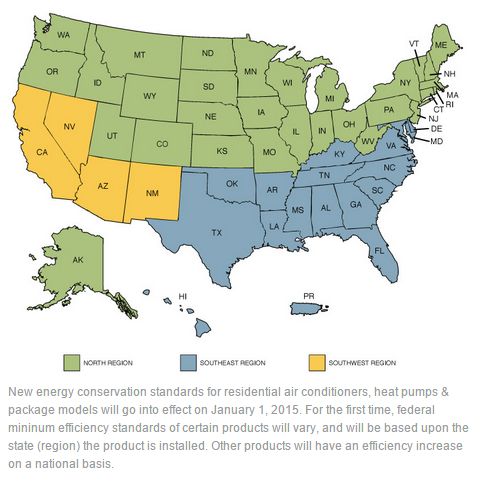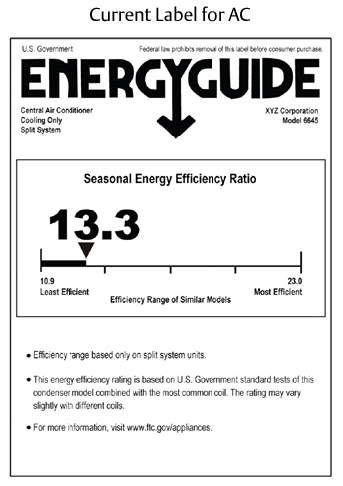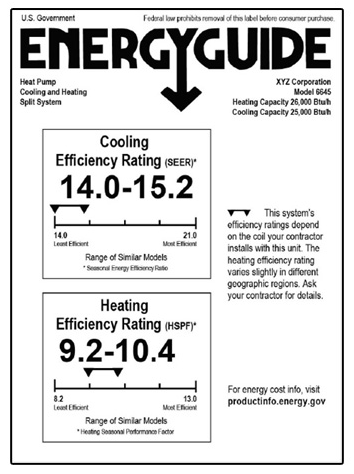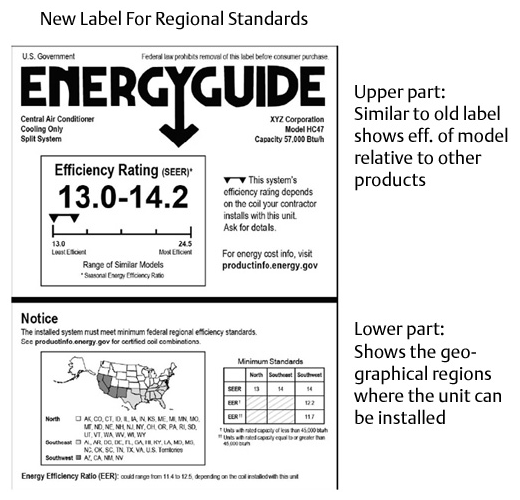
All air conditioning system manufacturers are required to label the SEER (seasonal energy efficiency ratio) rating on the unit’s compressor. The compressor is that box, [aka – loud monster], on the outside of your home.
In 1992 the Department of Energy mandated that all split systems [ you’ll know you have a split system if you have a loud box on the outside of your home and a coil on the inside] be manufactured with a minimum SEER rating of at least 10. We call it a 10 SEER Unit.
In 2006 DOE cracked down on the industry and increased the SEER rating to 13.
[toggle title_open=”Close Me Here” title_closed=”Click This Link To Learn How To Save Money” hide=”yes” border=”yes” style=”default” excerpt_length=”0″ read_more_text=”Read More” read_less_text=”Read Less” include_excerpt_html=”no”]Keep reading and we’ll show you how this change will help you save your hard earned cash! – Gary Smith – SafeHome Inspections[/toggle]
Well, DOE is at it again. As of January 1, 2015 A/C manufacturers are being asked to increase the efficiency to 14 SEER. However, if you live in certain climate zones your builder may not be required to install a higher efficiency systems. That’s because folks in colder climates don’t use an air conditioner as much as we do down south. I’m in Mississippi.
The new rule divides the country into three regions and uses climate specific zones called HDD (heating degree days) to set the standard.
Heating degree day (HDD) is a measurement designed to reflect the demand for energy needed to heat a building. It is derived from measurements of outside air temperature. The heating requirements for a given structureat a specific location are considered to be directly proportional to the number of HDD at that location. A similar measurement, cooling degree day (CDD), reflects the amount of energy used to cool a home or business. – Wikipedia
In the ruling, all contractors are required to retain records of the new installs. At a minimum your HVAC contractor should record:
- System manufacturer, model and serial number indoor coil or air handler
- Manufacturer and model number location of the installation (including street address, city, state, and zip code) date of the installation
- The party from whom the unit was purchased, including company or individual’s name, full address and phone number
- All records should be retained for 48 months.
Energy Guide Labeling
The bright Yellow sticker (energy labels) will also change. The old label looks like this:

The new labels look like this:


See more about the EnergyGuide sticker.
SEER Rating and Savings
As we’ve seen above, older systems have a SEER rating of 10 or under. A high efficiency system can reach a value of 23.
Let’s look at the energy and money can you save by upgrading from your old air conditioner to a modern, more efficient model. The tables below will give you an estimate of the electricity you can save by upgrading to higher SEER.
Contact us with questions or to request a thorough home inspection in Ridgeland, Brandon, Madison and Clinton Mississippi. We also help our clients with Construction Coaching and FHA remodeling through HUD’s 203(k) Loan Program.
Jan 2015 DOE increased the SEER Rating on A/C Units See Who It Affects & Why You Should Care http://t.co/TSBa8haQoA pic.twitter.com/QHhLa0qYKD
— Gary Smith (@MSHomeInspector) June 16, 2015

- - - - - - - - - - - - - - - - - - - - -